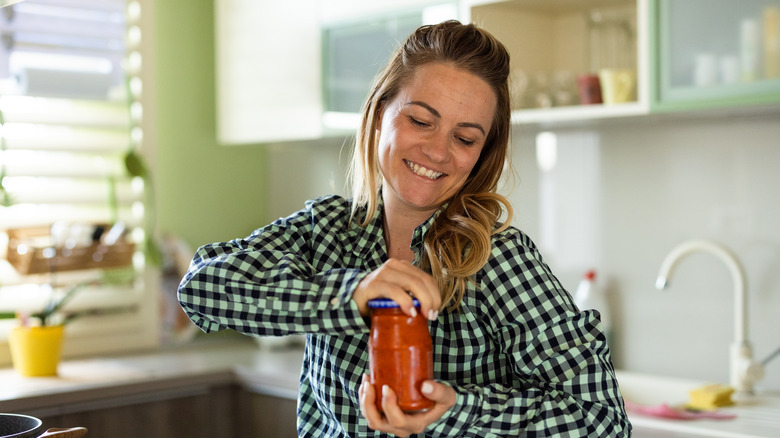Do This With Your Fingers To Increase Longevity
We may receive a commission on purchases made from links.
In addition to having lifelong companionship, maintaining a healthy diet, and keeping our minds active and engaged, exercise is essential in prolonging our lifespan. The U.S. Centers for Disease Control and Prevention (CDC) recommends that every adult spend 150 minutes a week engaged in moderate-intensity exercise and two days focused on muscle strengthening. Brisk walking, swimming, or even mowing the lawn are examples of moderate-intensity aerobic activities that can give the body the physical activity it requires. When it comes to a workout, experts say we shouldn't neglect our hands, either.
When referring to handgrip strength, experts define it as the maximum kilograms of force exerted by our voluntary muscles, according to 2021 research published in the Annals of Rehabilitation Medicine. Handgrip muscle strength is sometimes alternatively measured in pounds, Newtons, or milliliters of mercury, notes BMC Research Notes. Links have been established between handgrip strength — most often measured using hand-squeezing exercises — and quality of life, chronic disease risk, mortality, and more. While handgrip strength involves the entirety of the hand, pinch strength refers solely to our fingertip strength, another factor that has been linked with longevity (via CNN).
Why poor grip strength may increase mortality risk
Handgrip strength may come in handy when trying to twist open a pasta sauce jar, but pinch strength refers to how apt we are at squeezing the tips of the thumb and index finger together to lift and hold small objects (per "The Muscle Test Handbook" via Science Direct). Handgrip strength is measured using a device called a "dynamometer," while pinch strength is determined using a pinch meter.
Research indicates that the relationship between mortality and handgrip strength and/or pinch strength may be partially related to bone mineral density. Poor handgrip strength is often associated with low bone mineral density, which has been shown to increase the risk of frailty, hospitalization, and bone fractures in older adults (which can take longer to heal as we age), according to 2019 research published in Clinical Interventions in Aging. Furthermore, those with poor handgrip strength may also be lacking in vital micronutrients essential to our overall health, such as vitamin D (per Annals of Rehabilitation Medicine). However, giving our fingers a regular workout in order to prevent low handgrip and pinch strength may help us live longer.
How to use the paper pinch exercise to boost longevity
Certified strength and conditioning specialist and author of "Practical Solutions for Back Pain Relief" Dana Santas writes via CNN how we can add pinch strength exercises into our weekly muscle strengthening routine using what she calls the "paper pinch technique." First, lay a sheet of paper on a table in front of you. Spread your thumb and fingers apart and grab the paper with all of your fingers. Without bending your fingers or thumb, press downwards as you pinch all five digits together to scrunch up the paper. Repeat this exercise until the paper is crunched into a tight ball and do two to three sets per hand. If it feels too easy, stack on additional sheets of paper.
As previously mentioned, eating a healthy diet, keeping our minds occupied, and socializing well into old age are all ways to boost longevity. In addition to pinch strength exercises, WebMD suggests some other lesser-known habits that you may also want to incorporate into your daily life to prolong your lifespan. This includes fostering a sense of purpose, practicing forgiveness, and taking naps on a regular basis.



